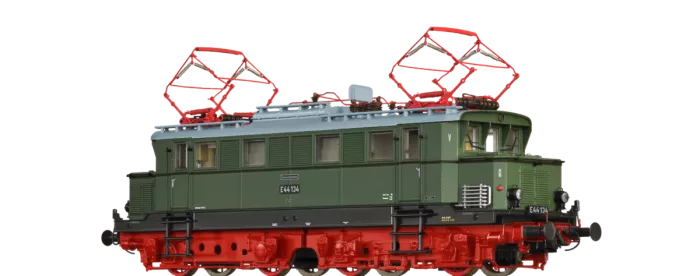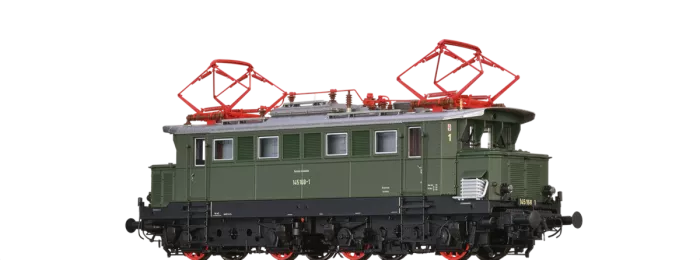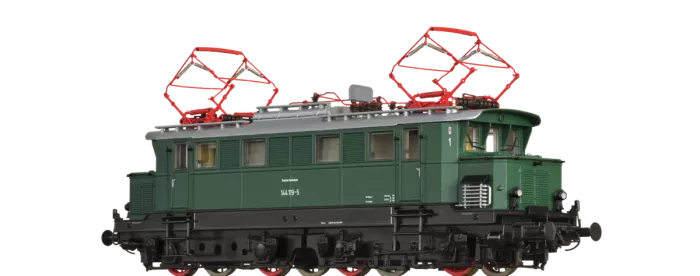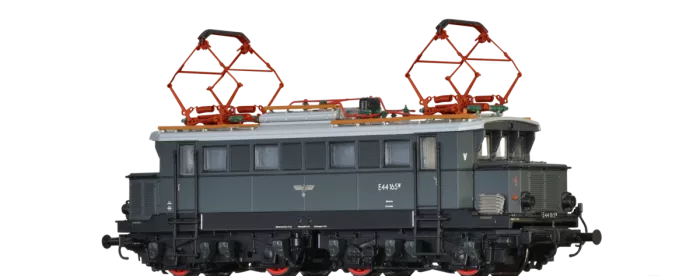
Electric Locomotive BR E44W DB
Road no.: E44 181§W§
Model details
- Detailed body
- Fine engravings and rivets
- Many extra mounted parts, such as handles, ladders and multi-part cooling coil
- Reproduction of the driver´s cab
- Precise replica of the bogies
- Separately mounted brake cylinder, brake pull rod, sand box and cowcatcher
- Precise replica of the roof, versions with normal and extended roof
- Prototypical roof-fittings, with many individually mounted parts
- Free-standing roof lines
- Various insulators
- Different main switch types
- Finely detailed pantographs
- True-to-original length of the roof walkways
- Bogie with three-point support
- Finest paintwork and printing
- 3rd front light can be switched on or off also in analog mode
- Driver's cab with LED lighting and in the sound version also in the machine room
- NEM-standard short coupling
- Analog models with Next18 interface
- Soundversion: all light functions can be switched on and off in digital mode, also machine roof lighting; optimal motor and load control for perfect running characteristics; noiseless 16-bit sound with up to 8 independent channels thanks to latest sound technology and excellent sound characteristics; compatible with all established digital systems (DCC, Motorola, SX1 und SX2); sound decoder on the main circuit board
- Modell: pantograph type SBS 39; main swith type R 628; with 8 sand boxes, indusi and extended roof; with dynamic brake for the first time in a model (deviating photo)
Downloads
Info about the original
After the annexation of Austria, the E44 locomotives were supposed to be used also on the alpine routes of the „Ostmark“. In order to minimize the brake block wear during downhill ride, the installation of an electric dynamic brake was required. The German National Railway (DRB) ordered such an additional device for the machines of the batch E44 152 - 191 and referred to the subtype as E44W for „Widerstandsbremse“ (dynamic brake). Because of the war, only the models E44W 152 - 183 were delivered between 1943 and 1951. Externally, the machines attracted attention primarily by the roof- mounted vent stacks of the dynamic brakes. After 1945, the German Railway (DB) maintained the dynamic brake only for the 16 Freiburg- based locomotives, which were used on the Höllental railway track, and referred to these as E44.11 from 1962 onwards, and as BR 145 after 1968. On all other machines, the electric brake was removed or, in case of a damage, decommissioned. The machines E44 1170 and 1180 survived; we can only hope that one of them will once again „hum“ past the Hirschsprung (location where a stag is said to have leapt over the Höllental).








